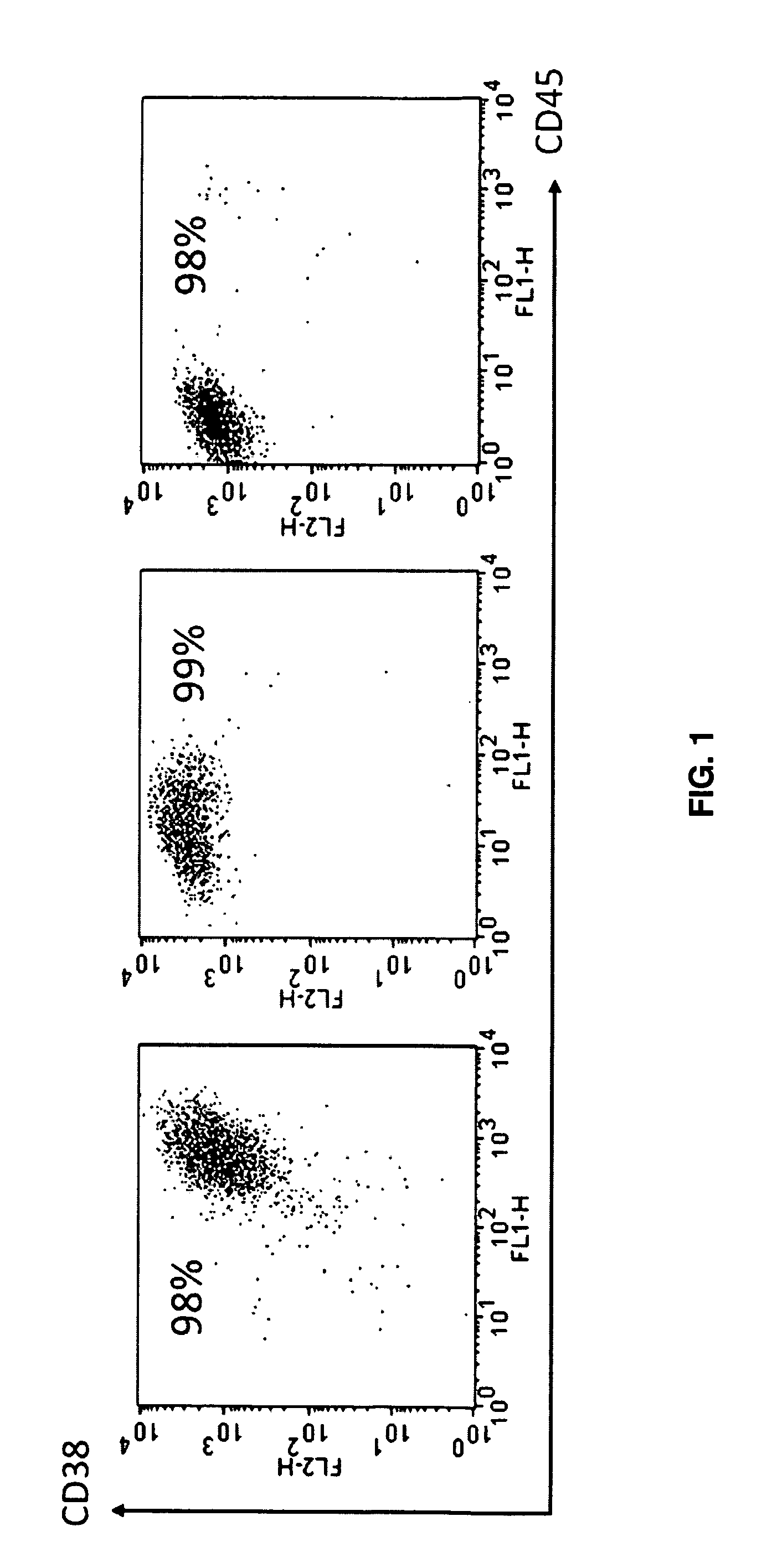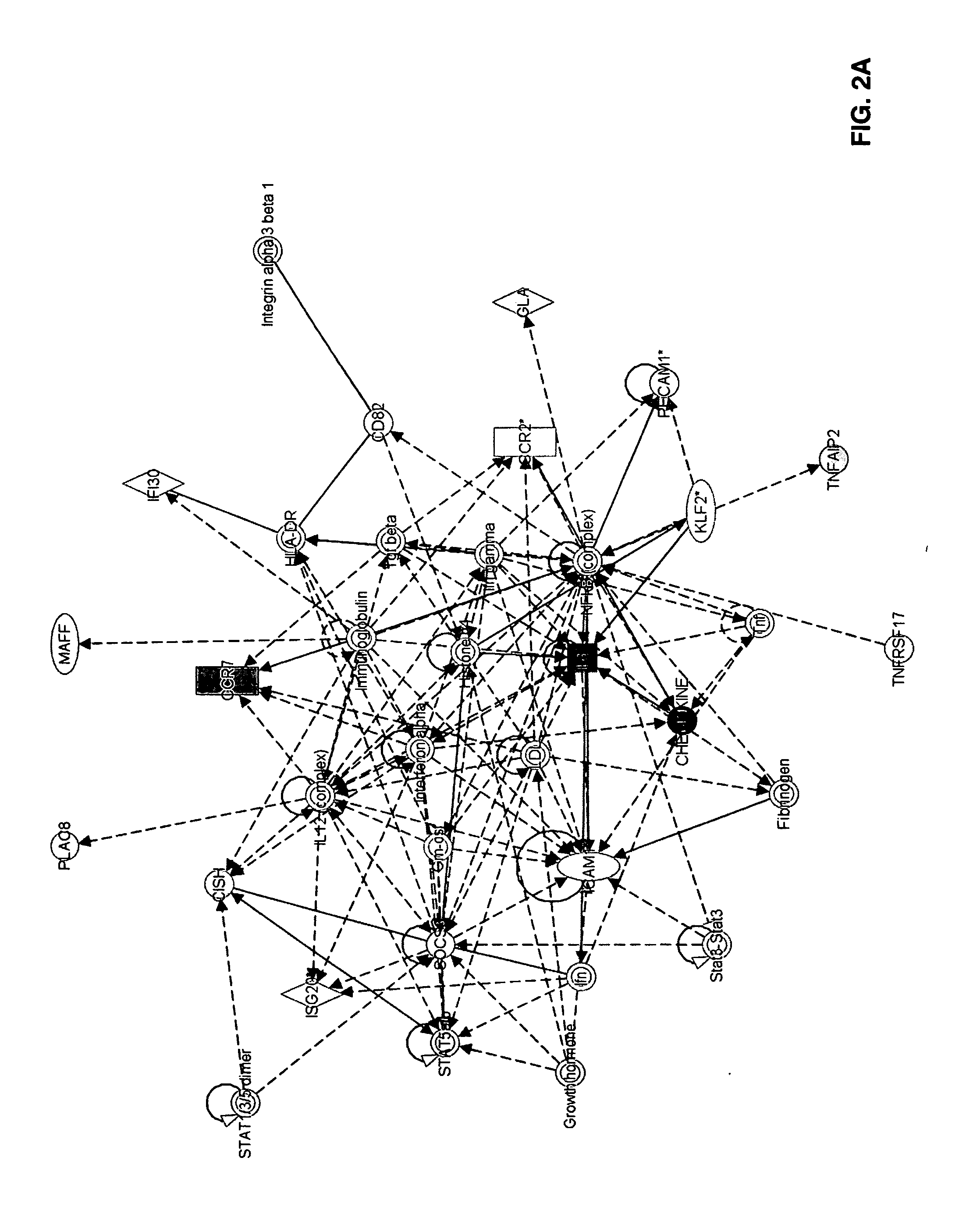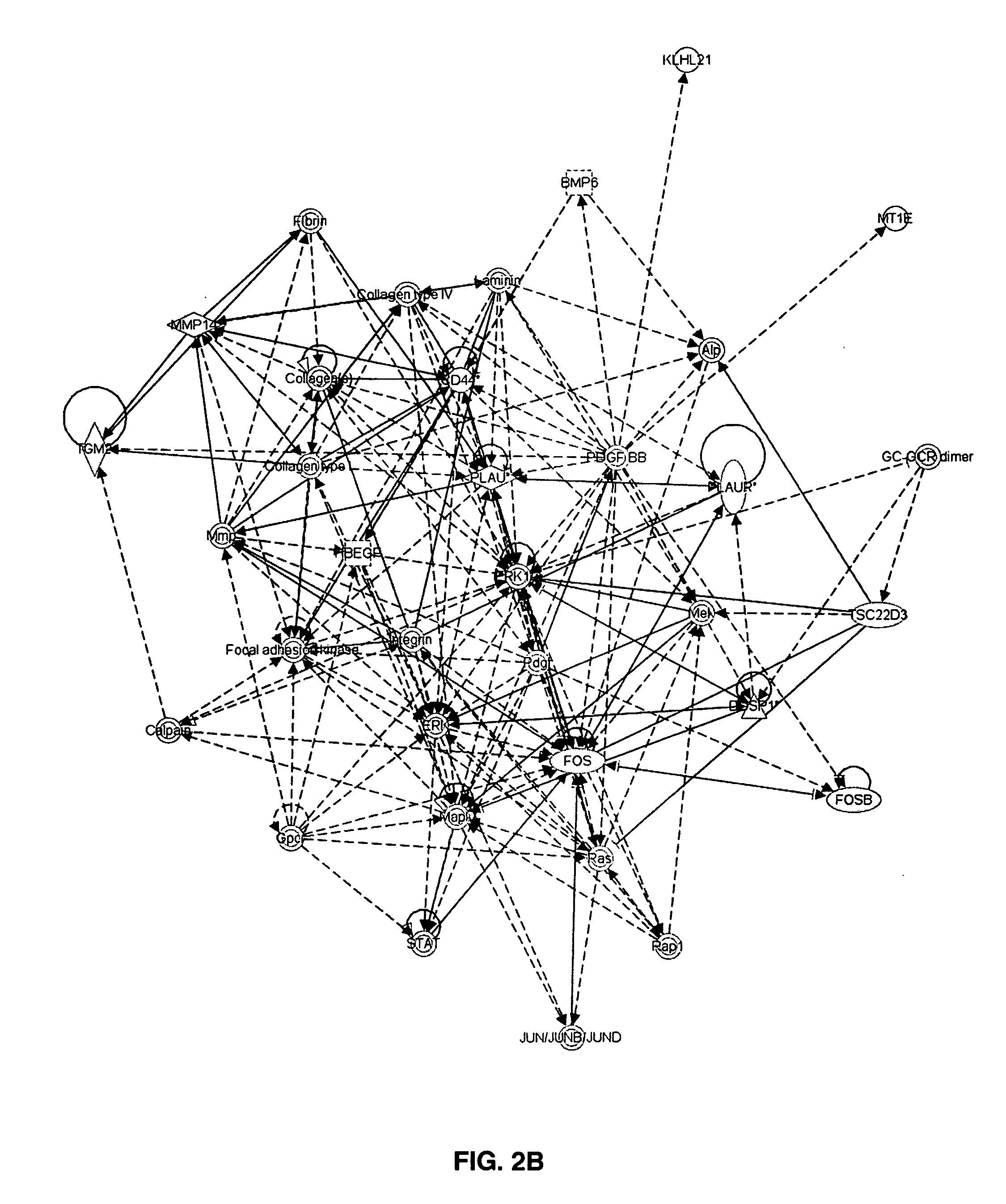Genes associated with post relapse survival and uses thereof
a technology of genes and post relapse survival, applied in the field of gene expression profiling and cancer prognosis, can solve problems such as the deficiency of prior art in the identification of genes
- Summary
- Abstract
- Description
- Claims
- Application Information
AI Technical Summary
Benefits of technology
Problems solved by technology
Method used
Image
Examples
example 1
Methods and Materials
Study Subjects
[0069]Gene expression profiles (GEP) of CD-138 selected myeloma cells were available on 127 patients with myeloma treated on total therapy 2 protocol (TT2) (32-22) at the time of first relapse (RL); for 71 of these patients, gene expression profiles was also analyzed prior to initiation of therapy (baseline, BL). These gene expression profiles data were used for post relapse survival analysis. Relapsed patients were treated with salvage therapy including thalidomide alone or in combination, lenalidomide alone or in combination, Bortezomib alone or in combination, BTD or BLD with or without chemotherapy (e.g. PACE), DT-PACE or VDT-PACE, or further transplant, as previously reported (34). Plasma cell purifications and gene expression profiles using the Affymetrix U133Plus2.0 microarray (Santa Clara, Calif.), were performed as previously described (35).
Cells for Co-Culture Experiments
[0070]Multiple myeloma plasma cells (MMPC) were purified from hepari...
example 2
Analysis
Analysis of Global Gene Expression
[0075]Global gene expression of multiple myeloma plasma cells / OC and MM / MSC interactions was analyzed using Affymetrix U133Plus2 chips. GeneChip Operating Software normalized output data (CHP files) were further analyzed using Acuity 4 bioinformatics software for analysis of microarrays (Molecular Devices, Sunnyvale, Calif.). To determine changes in gene expression, genes were selected that comply with the following three criteria: paired t-test p-value ≦0.05, 500 mean signal cutoff in either pre- or post-co-culture, and at least a two-fold difference in mean signal as calculated by dividing the signal mean following co-culture by the signal mean before co-culture. Thereafter, the datasets selected for MMPC / MSC and MMPC / OC co-cultures were compared in order to identify genes whose expression was similarly changed in both co-culture systems. Ingenuity Pathways Analysis (IPA) software (Ingenuity Systems, Redwood City, Calif.) was used to ident...
example 3
Multiple Myeloma Plasma Cells in Co-Culture with Osteoclasts
Changes in Gene Expression by MMPC Following MMPC / OC Interaction.
[0081]Thirteen experiments using primary multiple myeloma plasma cells from eight patients and MSC from five healthy donors were carried out. Survival of multiple myeloma plasma cells in co-culture after 4-7 days was significantly higher (23% average) than controls (p<0.0002, 2-tailed Wilcoxon paired signed-rank test). Expression by myeloma cells of 887 Affymetrix probesets, representing 675 genes, was changed following interaction with osteoclasts (552 genes up regulated and 123 down regulated). Ingenuity Pathways Analysis software assigned 605 of these genes to 40 networks of interrelated genes, of them 33 with high IPA score in the range 8-42.
Differentially Expressed Genes in MMPC / MSC Interaction
[0082]Following interaction of multiple myeloma plasma cells with MSC, expression of 365 Affymetrix probesets, corresponding to 296 genes (161 up regulated and 135 ...
PUM
| Property | Measurement | Unit |
|---|---|---|
| total volume | aaaaa | aaaaa |
| weight | aaaaa | aaaaa |
| purity | aaaaa | aaaaa |
Abstract
Description
Claims
Application Information
 Login to View More
Login to View More - R&D
- Intellectual Property
- Life Sciences
- Materials
- Tech Scout
- Unparalleled Data Quality
- Higher Quality Content
- 60% Fewer Hallucinations
Browse by: Latest US Patents, China's latest patents, Technical Efficacy Thesaurus, Application Domain, Technology Topic, Popular Technical Reports.
© 2025 PatSnap. All rights reserved.Legal|Privacy policy|Modern Slavery Act Transparency Statement|Sitemap|About US| Contact US: help@patsnap.com



